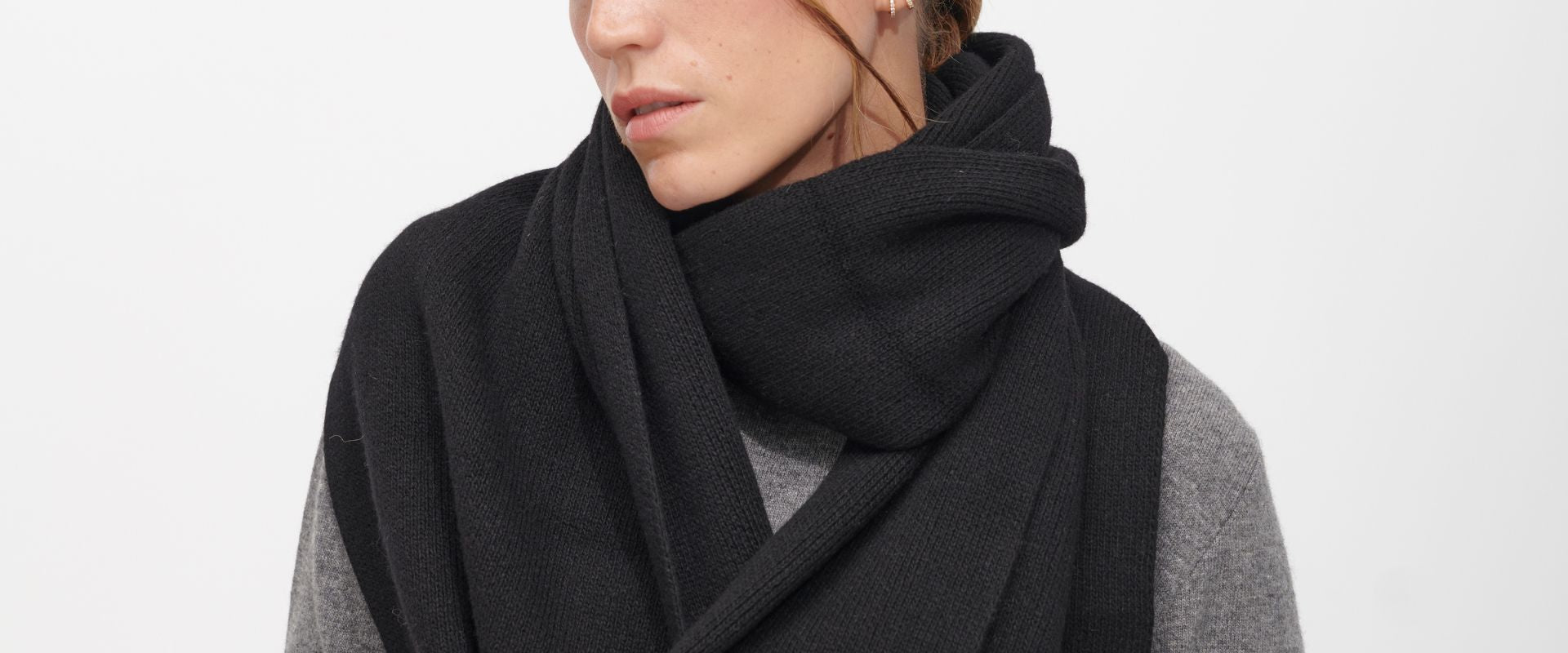Scarves have a colourful history, just like many other popular garments today. They’ve been worn for warmth, for fashion, or to show social status. They’ve evolved to come in many different styles, colours, sizes, and fabrics. That gives us a lot of choice to keep ourselves warm and cosy during the winter, while also being able to match them with our outfits. But let’s dig into the origin of the scarf, as it’s always interesting to uncover the history of the garments we wear today.

Egyptian Queen Nerfetiti was the first to be seen with a scarf
The scarf can be traced back to over 3,000 years, with multiple debated origins. But the earliest record that’s agreed on is 1350 BC in Ancient Egypt. It was worn by Queen Nerfetiti, who wore the scarf on her head. This is not to be mistaken with a headscarf, which has a longer, more complicated history. Some say the scarf was an adornment between her scalp and a jewelled headpiece, and some say it was to show social status.
The Chinese military were among one of the first to wear scarves as well. Sculptures of Chinese soldiers show rectangular scarves on their shoulders from 1000 BC.
Ancient Romans were also early adopters but more exact timing is unknown. They used the scarf as a sweat cloth, so scarves were used to keep clean - and thus to stay cool - rather than for warmth. What’s also surprising is that, in ancient times, men were typical wearers of scarves - while more recently it’s been seen as a feminine thing to wear. Although more people are realising that it’s also a manly item to wear again!
Silk scarf serves as a status symbol
For the Chinese, scarves continued to be part of the military uniform. Around 230 BC, scarves symbolised military ranking for Chinese soldiers. Silk scarves were designated to higher rank officials, and cotton scarves to lower rank officials.
Throughout the middle ages, scarves didn’t leave much of a trace, just like a lot of other history. But it seems that the scarves worn during this time were often worn on the head. Wealthy women wore headdresses with long veils - scarves - hanging from them. It’s said that Queen Eleanor of Aquitaine started this trend in the 12th century. Meanwhile, poorer women wore linen scarves tied around their heads.
The scarf goes from novelty to mainstream
In 1600s France, cravats - the forerunner of the modern necktie - were adopted by the French after being inspired by Croatian soldiers who wore knitted scarves as neck decorations. The cravat began to soar as a fashion accessory across France, and made its way to the UK.

Queen Nerfetiti in Ancient Egypt wears a scarf. A croatian soldier wearing a cravat in the 1600s.
Meanwhile, during the same century, the Spanish mantilla, a silk or lace scarf covering the head and shoulders, became fashionable. It was allegedly worn to prevent women from showing too much skin.

The Spanish mantilla
The scarf became mainstream after Queen Victoria ascended the throne in 1837. She was responsible for popularising the silk scarf as a luxurious item that differentiated the rich from the lower classes. When she died in 1901, the scarf became a staple fashion item.
World War I shifted the scarf’s reputation
By the first World War, the trend of wearing scarves declined and instead they were worn for function. It’s said that during the war, knitting became a patriotic war duty. Scarves, socks, and jumpers were produced and sent to troops of servicemen to keep them warm and dry in harsh conditions. After the war, surplus silk which was used to transport gunpowder was then made into garments, scarves, and furnishing. This is when it emerged back into fashion. One of the first groups to produce silk scarves was Liberty of London.
Hermes turned silk scarves into a major hit
In 1937, the French brand Hermes, which had already existed for a century, designed the first printed silk scarf. As if it couldn’t get more luxurious, the scarf became outstanding from all that came before it - a major hit for royalty and celebrities. They imported strong, durable Chinese silk to be woven into scarves and designs that are still popular today. Silk scarves were unaffordable for many women though, and that’s where the invention of rayon, or viscose, came in. Cheaper and artificial but with the properties of silk.
Scarves became a commercial, modern accessory
With scarves being made from cheaper textiles like rayon and viscose in the late 50s, scarves started to be produced on a mass scale and were much more accessible. Cotton, linen, and wool were also used to make scarves for everyday wear. By the 90s, cashmere scarves and pashminas became popular due to their softness, warmth, and luxury. They started to be worn as a shawl wrapped around the shoulders. Now, scarves can be made from many materials, even linen and bamboo. They can be thin or thick, short or long, and come in an array of different colours and designs. Scarves are even worn as accessories in the hair, belts, or bags, or worn as tops. But they can also simply be worn around the neck to stay warm and cosy.

The SANVT Scarf
Here at SANVT, we salute the history behind scarves. And now we’re adding to the timeline with a timeless wool blend scarf that can be worn for both warmth and fashion. It provides a luxurious feel, while being accessible. The best part is that it has the benefits of wool and cashmere but is made with 100% Global Recycled Standard certified recycled materials. Meaning, there’s no animal cruelty, and it’s extra sustainable because we’re making use of what’s already on the planet. In the future we hope more scarves will be made this way.

